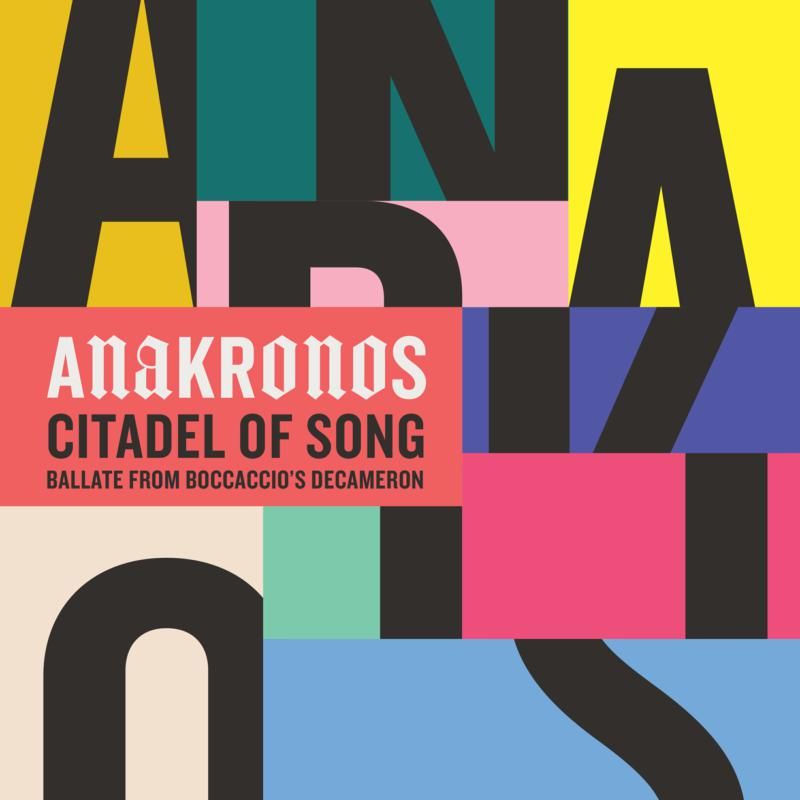Anakronos does it again: Citadel of Song

We met Anakronos early on in Classical Explorer’s history with a post on The Red Book of Ossory.
The first song morphs from music that is earlier than early through impreovisatio that sounds like Indian tabla music before almost a folksy element comes across. Inspired by a story from Giovanni Boccaccio's Decameron, this is music simultaneously ancient and modern:
Florence, the time of the Black Death - when songs were written about hope, joy, anxiety, and the obsessive side of romantic love. Seven young men flee Florence and tell their stories (the Decameron). At the end of each of the ten days, when stories have been told, one of their number sings a song - lyrics are extant by Bocaccio, but the music here is courtesy of Catriona O'Leary and Anakronos. The florid vocal melismas of Day 2,“Qual donna canterà” nestle next to instrumental solos of almost snake-charmer bent:
For all the instrumental sleights, the morphing from ancient to jazz to contemporary to World music, it is the timelessness of a single line that perhaps speaks the most, initially solely the pure voice of O'Leary herself in Niuna sconsolata Regina pretiosa: instruments are added, first in the most amazingly c0-ordinates unison with O'Leary, then with an independence of their own. Finally, a rhythm section that might be ancient, but could just as easily back a pop track. What is this alchemy?:
A jazz percussion break opens “Regina pretiosa,” the second track from Day 3, courtesy of Andrea Piccioni, leading to purely instrumental responses. It is short but effective; and contrasts maximally with the emotionally-weighted “Lagrimando dimostro” for voice and guitar (Barry O'Halpin). The rhythmic interplay is beautiful, as is the dialogue between voice and guitar:
Day 5 presents “Amor, la vaga luce,” O'Leary's voice melismatic against a timeless drone in this itself timeless love song. Vocal lines echo via other instruments in an imagined cathedral acoustic. It's magical:
The second disc presents days 6-10, plus an Epilogue, “Irae Dance”. Day 6 comprises the incredibly slow unfurling of “Amor, s'io psso uscir de' tuoi srtigli” and “Love’s Claw Dance’ for guitar ... until, that is, the lop-sided dance itself begins ...
Contrasts seem heightened on this second isc, like that between the gentle voice of “Deh, lassa la mia vita” and the decidedly grungy instrumentals of “Tanto è, Amore, il bene” (this last definitely has a “groove”):
The penultimate song, “Io mi son giovinetta” literally throbs with possibility at its opening, over which O'Leary's siren-like song snakes and curls. Finally for the tend ays, “S’amor venisse senza gelosia,” which begins with jazz on saxophone and bass clainet. It is relaxing, for sure, and underneath it all is an implicatio of the timelessness of the opening, an exiting of temprality. The entry of the voice is almost impreceptible and shifts the mood and mode of utterance, confirming that shadow:
The coda of the album, Irae Dance, is lioke a slow dance around an ancient tunes that revivifies itslf into a wild reel. It's the perfect close:
This is a fine follow-on release from Anakronos. Absolytely recommended!
